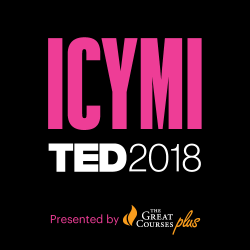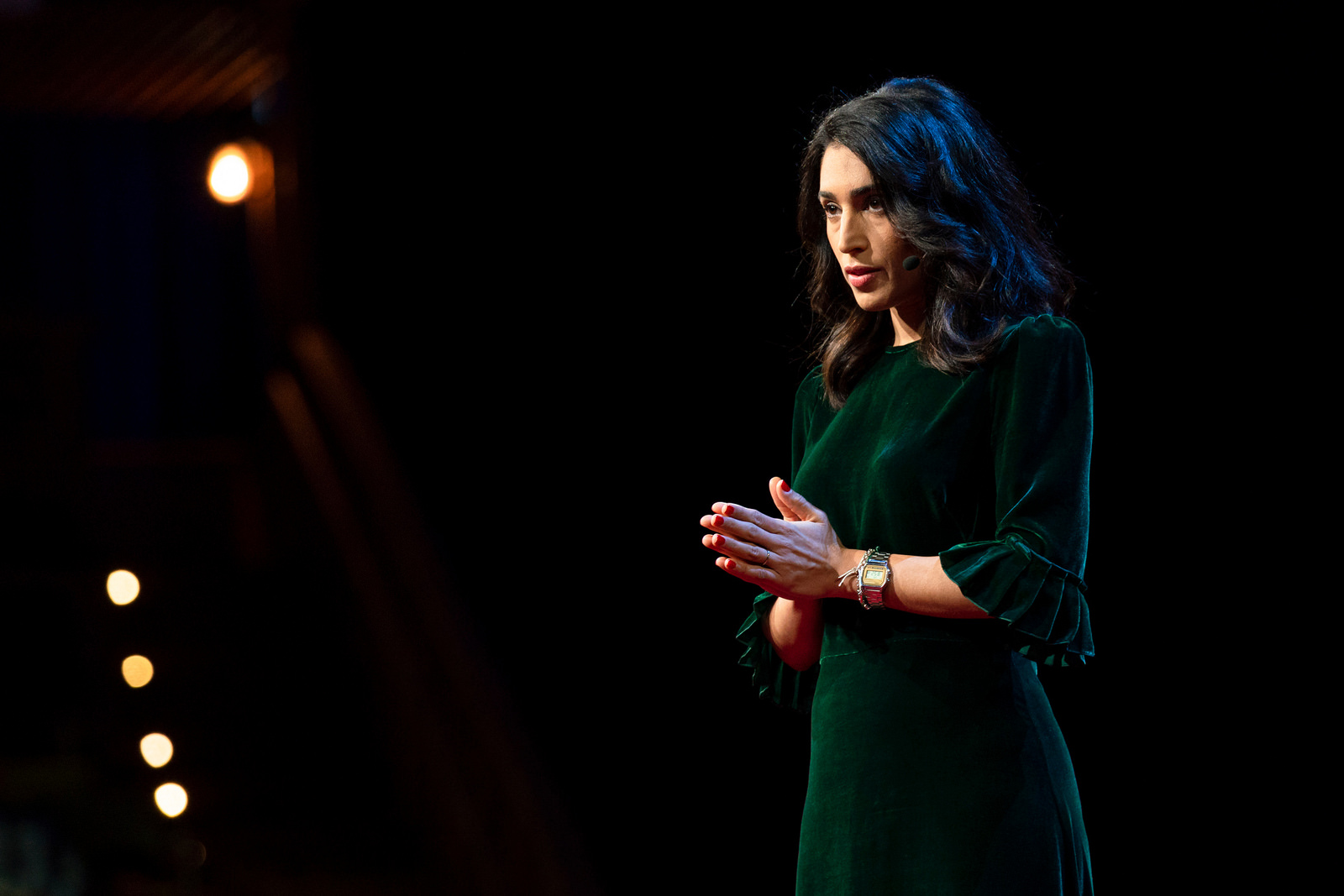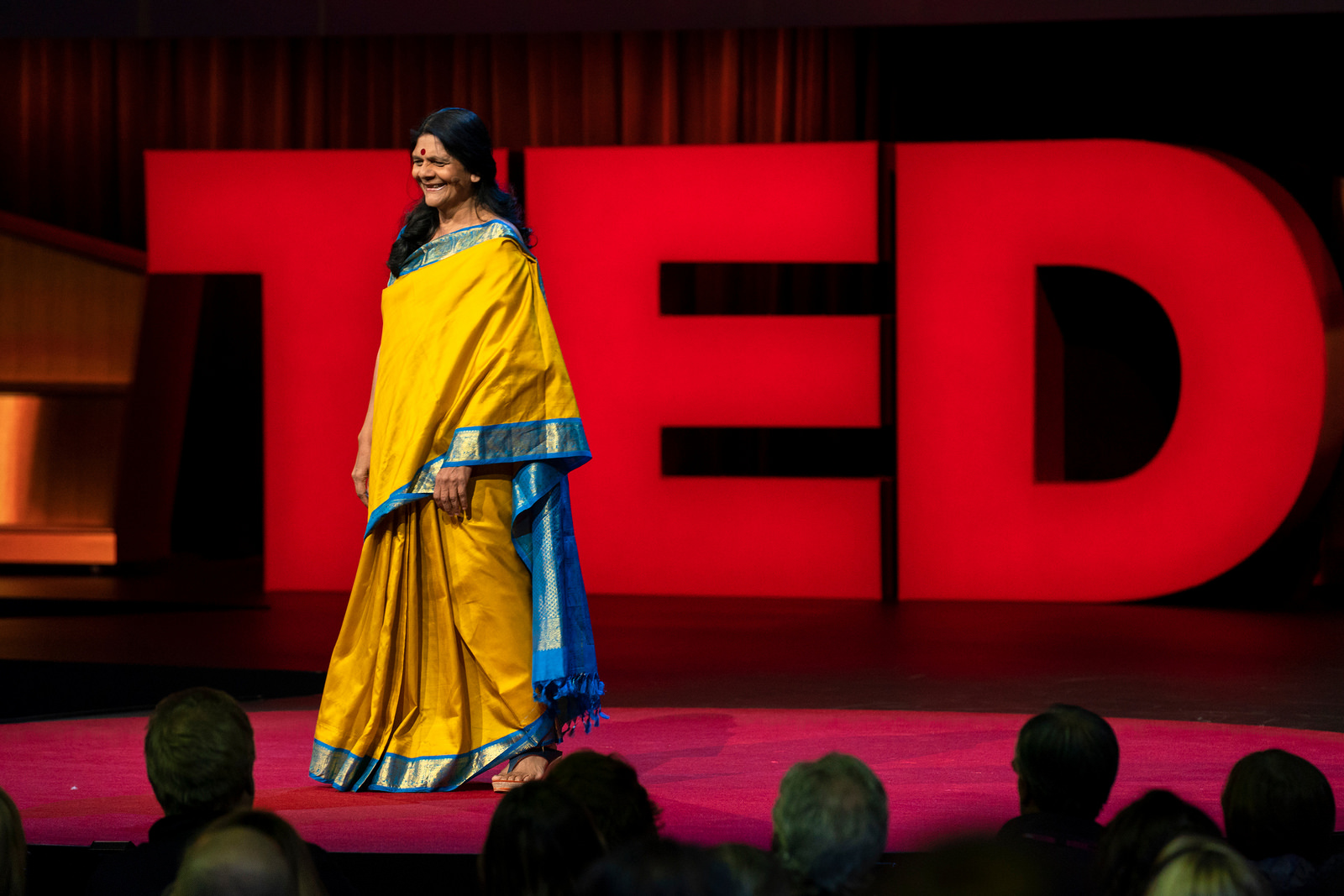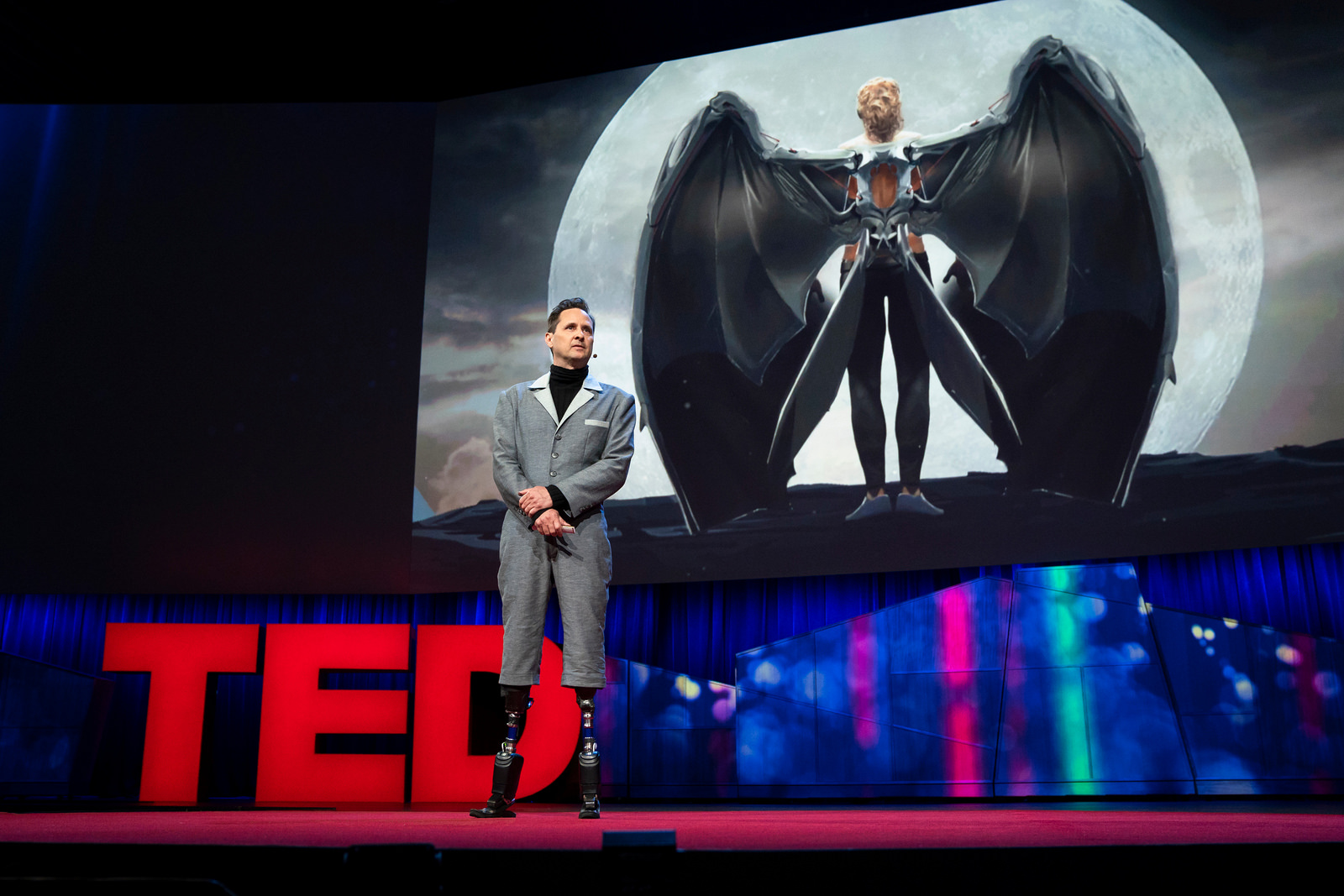 Three sessions of memorable TED Talks covering life, death and the future of humanity made the penultimate day of TED2018 a remarkable space for tech breakthroughs and dispatches from the edges of culture.
Three sessions of memorable TED Talks covering life, death and the future of humanity made the penultimate day of TED2018 a remarkable space for tech breakthroughs and dispatches from the edges of culture.
Here are some of the themes we heard echoing through the opening day, as well as some highlights from around the conference venue in Vancouver.
The future built on genetic code. DNA is built on four letters: G, C, A, T. These letters determine the sequences of the 20 amino acids in our cells that build the proteins that make life possible. But what if that “alphabet” got bigger? Synthetic biologist and chemist Floyd Romesberg suggests that the four letters of the genetic alphabet are not all that unique. He and his colleagues constructed the first “semi-synthetic” life forms based on a 6-letter DNA. With these extra building blocks, cells can construct hitherto unseen proteins. Someday, we could tailor these cells to fulfill all sorts of functions — building new, hyper-targeted medicines, seeking out and destroying cancer, or “eating” toxic materials. And maybe soon, we’ll be able to use that expanded DNA alphabet to teleport. That’s right, you read it here first: teleportation is real. Biologist and engineer Dan Gibson reports from the front lines of science fact that we are now able to transmit the most fundamental parts of who we are: our DNA. It’s called biological teleportation, and the idea is that biological entities including viruses and living cells can be reconstructed in a distant location if we can read and write the sequence of that DNA code. The machines that perform this fantastic feat, the BioXP and the DBC, stitch together both long and short forms of genetic code that can be downloaded from the internet. That means that in the future, with an at-home version of these machines (or even one worlds away, say like, Mars), we may be able to download and print personalized therapeutic medications, prescriptions and even vaccines.

“If we want to create meaningful technology to counter radicalization, we have to start with the human journey at its core,” says technologist Yasmin Green at Session 8 at TED2018: The Age of Amazement, April 13, Vancouver. (Photo: Jason Redmond / TED)
Dispatches from the fight against hate online. At Jigsaw (a division of Alphabet), Yasmin Green and her colleagues were given the mandate to build technology that could help make the world safer from extremism and persecution. In 2016, Green collaborated with Moonshot CVE to pilot a new approach, the “Redirect Method.” She and a team interviewed dozens of former members of violent extremist groups, and used what they learned to create targeted advertising aimed at people susceptible to ISIS’s recruiting — and counter those messages. In English and Arabic, the eight-week pilot program reached more than 300,000 people. “If technology has any hope of overcoming today’s challenges,” Green says, “we must throw our entire selves into understanding these issues and create solutions that are as human as the problems they aim to solve.” Dylan Marron is taking a different approach to the problem of hate on the internet. His video series, such as “Sitting in Bathrooms With Trans People,” have racked up millions of views, and they’ve also sent a slew of internet poison in his direction. He developed a coping mechanism: he calls up the people who leave hateful remarks, opening their chats with a simple question: “Why did you write that?” These exchanges have been captured on Marron’s podcast “Conversations With People Who Hate Me.” While it hasn’t led to world peace, he says it’s caused him to develop empathy for his bullies. “Empathizing with someone I profoundly disagree with doesn’t suddenly erase my deeply held beliefs and endorse theirs,” he cautions. “I simply am acknowledging the humanity of a person who has been taught to think a certain way, someone who thinks very differently than me.”
Is artificial intelligence actually intelligence? Not yet, says Kevin Frans. Earlier in his teen years (he’s now just 18) he joined the OpenAI lab to think about the fascinating problem of making AI that has true intelligence. Right now, he says, a lot of what we call intelligence is just trial-and-error on a massive scale — a machine can try every possible solution, even ones too absurd for a human to imagine, until it finds the thing that works best to solve a single discrete problem. Which really isn’t general intelligence. So Frans is conceptualizing instead a way to think about AI from a skills perspective — specifically, the ability to learn simple skills and assemble them to accomplish tasks. It’s early days for this approach, and for Kevin himself, who is part of the first generation to grow up as AI natives. Picking up on the thread of pitfalls of current AI, artist and technology critic James Bridle describes how automated copycats on YouTube mimic trusted videos by using algorithmic tricks to create “fake news” for kids. End result: children exploring YouTube videos from their favorite cartoon characters are sent down autoplaying rabbit holes, where they can find eerie, disturbing videos filled with very real violence and very real trauma. Algorithms are touted as the fix, but as Bridle says, machine learning is really just what we call software that does things we don’t understand … and we have enough of that already, no?

Chetna Gala Sinha tells us about a bank in India that meets the needs of rural poor women who want to save and borrow. (Photo: Jason Redmond / TED)
Listen and learn. Takemia MizLadi Smith spoke up for the front-desk staffer, the checkout clerk, and everyone who’s ever been told they need to start collecting information from customers, whether it be an email, zip code or data about their race and gender. Smith makes the case to empower every front desk employee who collects data — by telling them exactly how that data will be used. Chetna Gala Sinha, meanwhile, started a bank in India that meets the needs of rural poor women who want to save and borrow — and whom traditional banks would not touch. How does the bank improve their service? As Chetna says: simply by listening. Meanwhile, sex educator Emily Nagoski talked about a syndrome called emotional nonconcordance, where what your body seems to want runs counter to what you actually want. In an intimate situation, ahem, it can be hard to figure out which one to listen to, head or body. Nagoski gives us full permission and encouragement to listen to your head, and to the words coming out of the mouth of your partner. And Harvard Business School prof Frances Frei gave a crash course in trust — building it, keeping it, and the hardest, rebuilding it. She shares lessons from her stint as an embed at Uber, where far from listening to in meetings, staffers would actually text each other during meetings — about the meeting. True listening, the kind that builds trust, starts with putting away your phone.

Bionic man Hugh Herr envisions humanity soaring out of the 21st century. (Photo: Ryan Lash / TED)
A new way to heal our bodies … and build new ones. Optical engineer Mary Lou Jepsen shares an exciting new tool for reading what’s inside our bodies. It exploits the properties of red light, which behaves differently in different body materials. Our bones and flesh scatter red light (as she demonstrates on a piece of raw chicken breast), while our red blood absorbs it and doesn’t let it pass through. By measuring how light scatters, or doesn’t, inside our bodies, and using a technique called holography to study the resulting patterns as the light comes through the other side, Jepsen believe we can gain a new way to spot tumors and other anomalies, and eventually to create a smaller, more efficient replacement for the bulky MRI. MIT professor Hugh Herr is working on a different way to heal — and augment — our bodies. He’s working toward a goal that’s long been thought of as science fiction: for synthetic limbs to be integrated into the human nervous system. He calls it “NeuroEmbodied Design,” a methodology to create cyborg function where the lines between the natural and synthetic world are blurred. This future will provide humanity with new bodies and end disability, Herr says — and it’s already happening. He introduces us to Jim Ewing, a friend who lost a foot in a climbing accident. Using the Agonist-antagonist Myoneural Interface, or AAMI, a method Herr and his team developed at MIT to connect nerves to a prosthetic, Jim’s bones and muscles were integrated with a synthetic limb, re-establishing the neural connection between his ankle and foot muscles and his brain. What might be next? Maybe, the ability to fly.
Announcements! Back in 2014, space scientist Will Marshall introduced us to his company, Planet, and their proposed fleet of tiny satellites. The goal: to image the planet every day, showing us how Earth changes in near-real time. In 2018, that vision has come good: every day, a fleet of about 200 small satellites pictures every inch of the planet, taking 1.5 million 29-megapixel images every day (about 6T of data daily), gathering data on changes both natural and human-made. This week at TED, Marshall announced a consumer version of Planet, called Planet Stories, to let ordinary people play with these images. Start playing now here. Another announcement comes from futurist Ray Kurzweil: a new way to query the text inside books using something called semantic search — which is a search on ideas and concepts, rather than specific words. Called TalkToBooks, the beta-stage product uses an experimental AI to query a database of 120,000 books in about a half a second. (As Kurzweil jokes: “It takes me hours to read a hundred thousand books.”) Jump in and play with TalkToBooks here. Also announced today: “TED Talks India: Nayi Soch” — the wildly popular Hindi-language TV series, created in partnership with StarTV and hosted by Shah Rukh Khan — will be back for three more seasons.